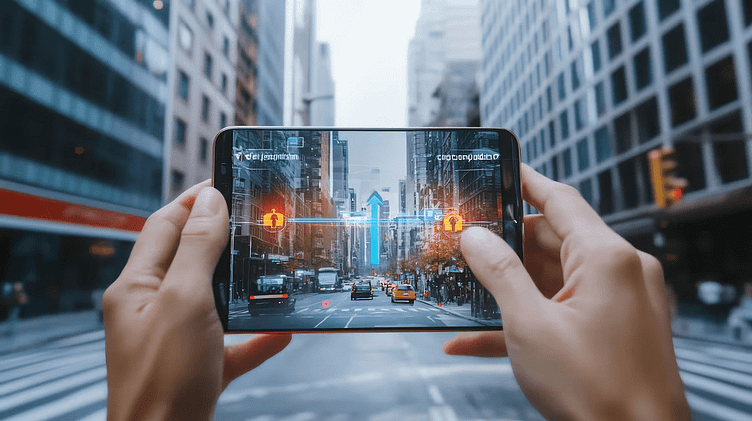Revolutionizing Navigation: How AR is Shaping the Future
In an era where technology continually redefines our daily experiences, augmented reality (AR) is emerging as a game-changer in navigation. By merging digital information with the physical world, AR navigation is transforming the way we find our way around, whether we’re exploring a new city or navigating through a busy shopping mall. Let’s delve into how AR navigation is revolutionizing our journeys and what it means for the future.
1. What is Augmented Reality Navigation?
Augmented Reality navigation uses digital overlays to enhance our perception of the real world. Unlike traditional navigation systems that rely solely on maps and text-based directions, AR navigation superimposes visual cues, such as arrows and highlights, directly onto a user’s view of their surroundings. This creates an intuitive and immersive wayfinding experience that guides users in real-time.
2. Key Features of AR Navigation
Real-Time Directions
AR navigation systems provide users with real-time, interactive directions. Imagine walking down a street and seeing digital arrows and information superimposed on your view, guiding you to your destination. This seamless integration makes following directions more intuitive and less distracting than constantly glancing at a map.
Enhanced Landmarks
AR can enhance points of interest (POIs) by displaying additional information such as ratings, reviews, and historical facts. Whether you’re exploring a new city or just looking for a nearby restaurant, Augmented Reality helps you discover and learn more about your surroundings effortlessly.
Indoor Navigation
Navigating large indoor spaces like airports, malls, or hospitals can be challenging. AR navigation offers detailed, turn-by-turn guidance within these complex environments, helping users find their way with ease. From locating the nearest restroom to finding the best route to a gate, AR simplifies indoor wayfinding.
Interactive Wayfinding
AR navigation encourages user interaction by allowing you to engage with digital elements overlaid on the real world. You can tap on virtual markers to access more information, promotional offers, or even virtual tours, enhancing the overall navigation experience.
Safety and Awareness
AR navigation can also improve safety by highlighting potential hazards and obstacles in real-time. Whether you’re walking or driving, AR can alert you to dangerous situations, ensuring a safer navigation experience.
3. Benefits of AR Navigation
Enhanced User Experience: AR provides a more immersive and engaging navigation experience compared to traditional methods.
Increased Convenience: Real-time, intuitive guidance reduces the need for frequent map-checking and enhances overall convenience.
Improved Exploration: Discovering new places becomes easier and more enjoyable with additional context and interactive features.
Greater Safety: By highlighting hazards and obstacles, AR navigation helps users stay aware of their surroundings and avoid potential dangers.
4. The Future of AR Navigation
As AR technology continues to evolve, we can expect even more sophisticated navigation solutions. Advances in AR will likely bring improved accuracy, more personalized experiences, and broader adoption across various industries, including travel, retail, and healthcare. The integration of AI and machine learning will further enhance AR navigation, making it an indispensable tool for both everyday and extraordinary journeys.
Conclusion
Augmented reality navigation is not just a technological novelty; it’s a transformative tool that is reshaping how we find our way. By providing real-time, interactive, and immersive experiences, AR navigation makes exploring and navigating the world around us more intuitive and enjoyable. As technology continues to advance, AR navigation will undoubtedly play an increasingly central role in our daily lives, making every journey smarter and more engaging.
